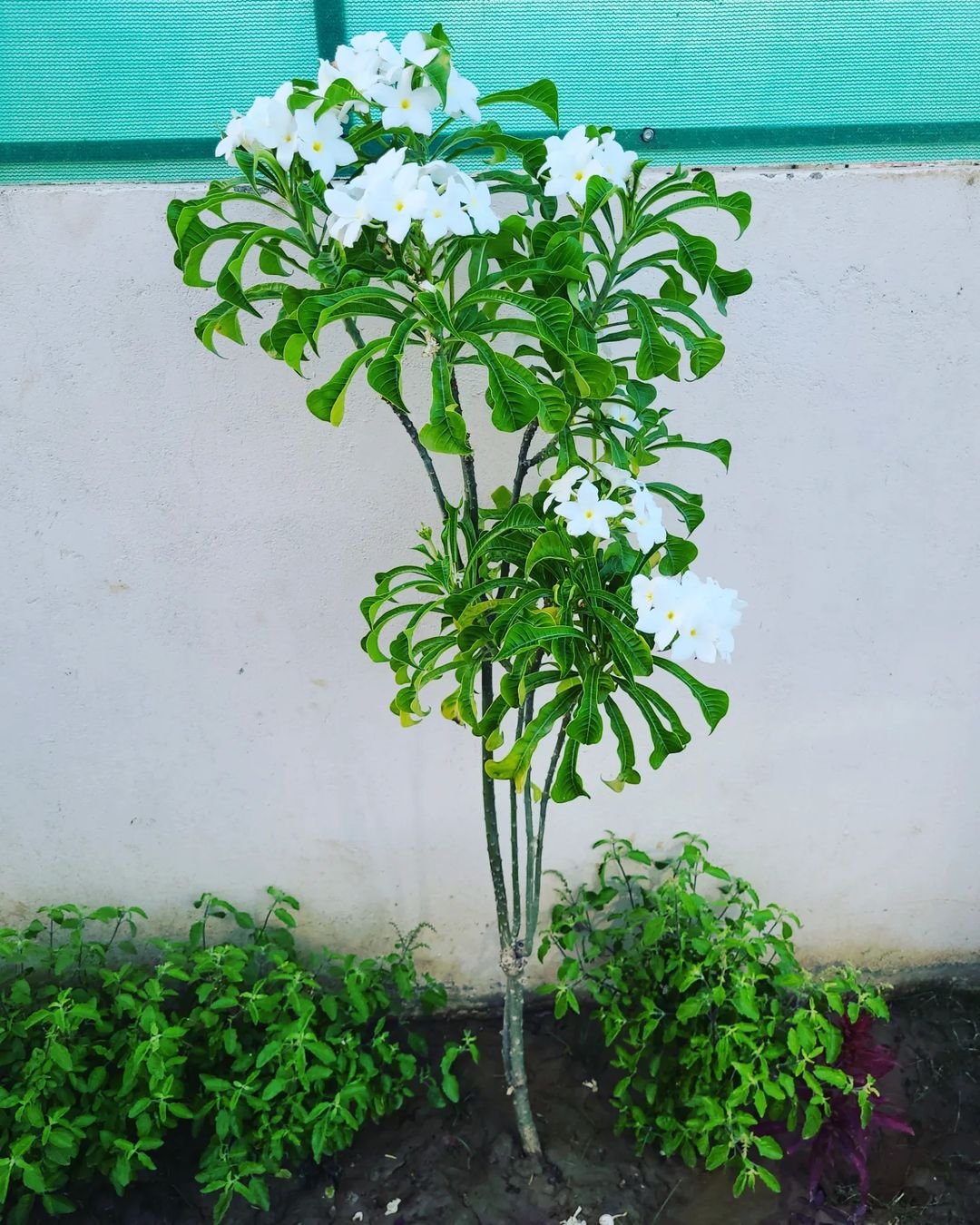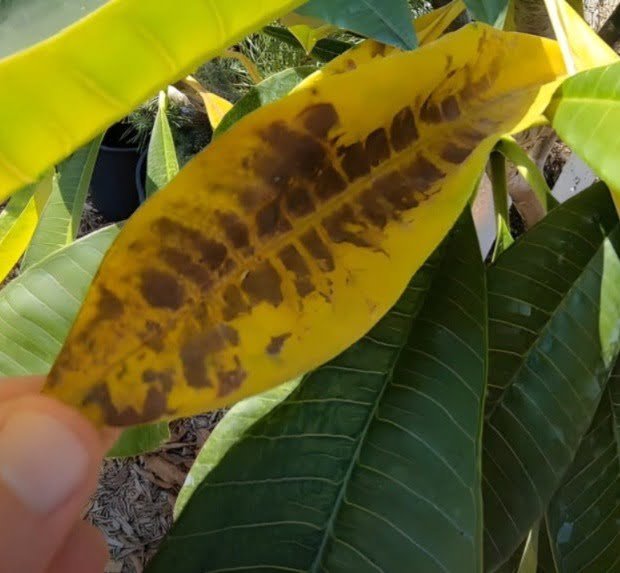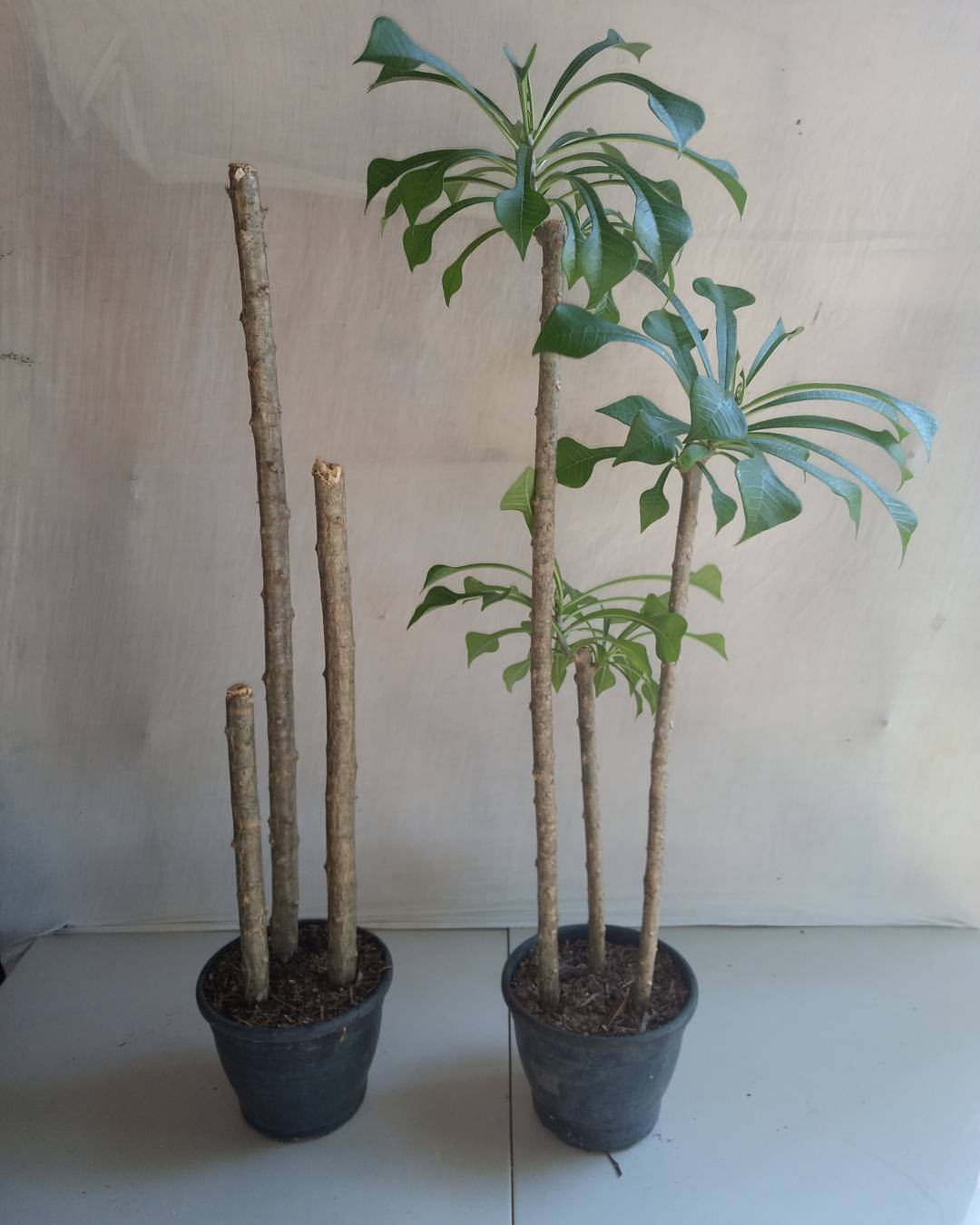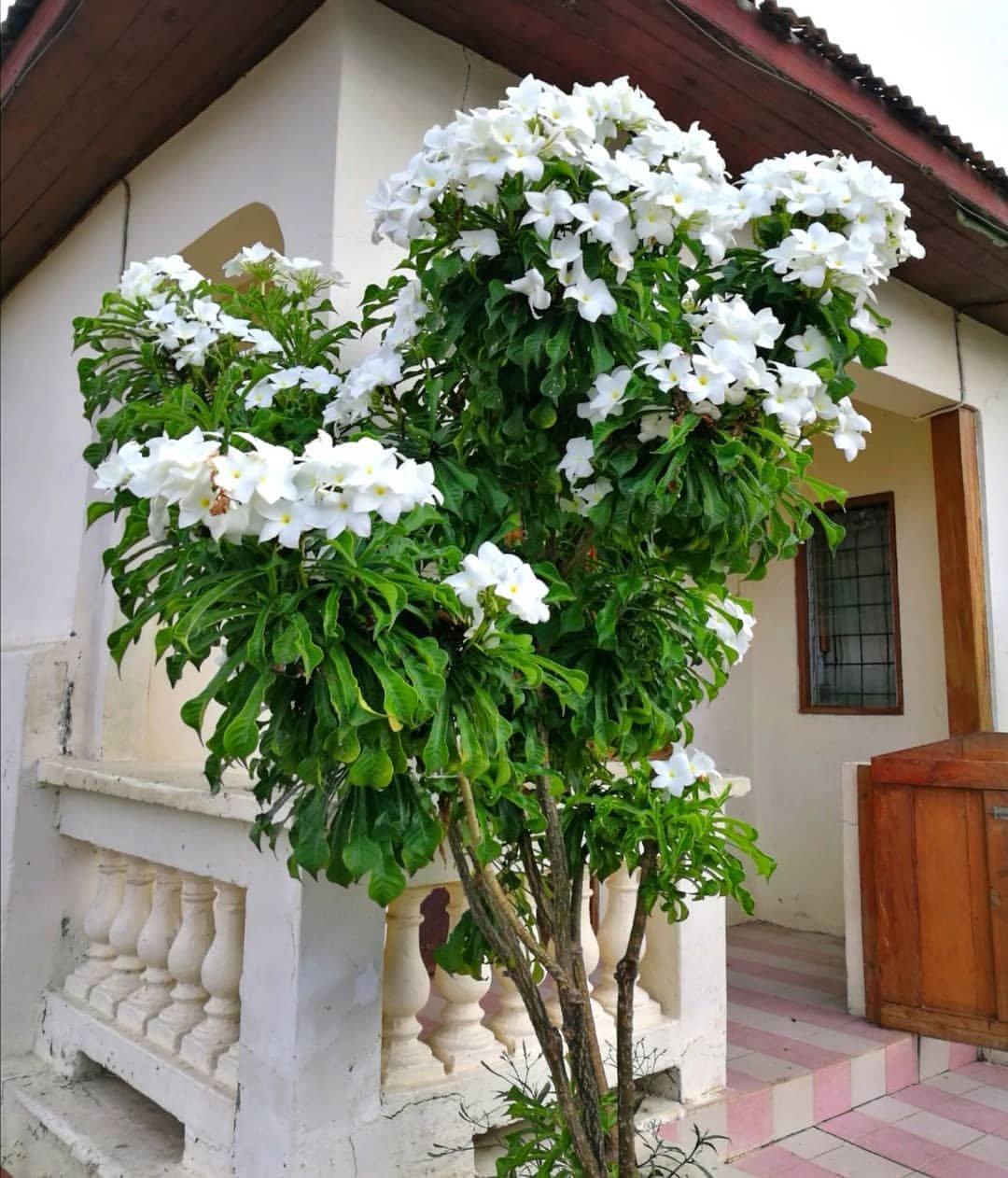Follow our step-by-step guide to growing Plumeria Pudica. Get detailed instructions on planting, nurturing and troubleshooting common issues.
Plumeria pudica, also known as bridal bouquet or white frangipani, is a beautiful flowering plant that can brighten up any garden. This guide will help you grow and care for your own Plumeria pudica, from planting to troubleshooting common issues.
Here’s a concise information chart about Plumeria pudica:
| Aspect | Details |
|---|---|
| Botanical Name | Plumeria pudica |
| Common Name | Bridal Bouquet, Fiddle Leaf Plumeria |
| Appearance | Clusters of white flowers with yellow centers, long, narrow leaves arranged like a fiddle leaf |
| Leaf Shape | Long, narrow, fiddle-shaped |
| Plant Type | Shrub or small tree |
| Zones | 10-12 (typically grown in tropical regions) |
| Sun Exposure | Full sun to part shade |
| Soil Type | Well-drained, sandy or loamy |
| Watering | Regular, moderate |
| Fertilization | Balanced fertilizer during growing season |
| Growth Habit | Upright, bushy |
| Height/Spread | 6-15 feet tall, 4-10 feet wide |
| Pests | Generally pest-free |
| Special Features | Fragrant flowers, ornamental foliage, drought-tolerant once established |
What is Plumeria Pudica?

Plumeria pudica is a small tree or shrub native to Panama and Colombia. It’s part of the Apocynaceae family, which includes other popular ornamental plants. Unlike its more common cousins, Plumeria pudica has unique spoon-shaped leaves and produces white flowers with yellow centers year-round in warm climates.
Key features of Plumeria pudica:
- Evergreen in warm climates
- Grows 10-15 feet tall
- Produces fragrant white flowers
- Has distinctive spoon-shaped leaves
Why Grow Plumeria Pudica?
There are many reasons to add Plumeria pudica to your garden:
- Beautiful flowers: The plant produces clusters of white, fragrant flowers that can bloom year-round in the right conditions.
- Low maintenance: Once established, Plumeria pudica is relatively easy to care for.
- Drought tolerant: These plants can withstand periods of drought, making them suitable for water-wise gardens.
- Attractive foliage: The unique spoon-shaped leaves add interest even when the plant isn’t blooming.
- Container friendly: Plumeria pudica can be grown in large pots, making it suitable for patios or small gardens.
Step-by-Step Guide to Growing Plumeria Pudica

Choosing the Right Location
Plumeria pudica thrives in full sun to partial shade. In hotter climates, some afternoon shade can be beneficial. These plants prefer well-draining soil and protection from strong winds.
Preparing the Soil
Prepare a mix of:
- 1 part garden soil
- 1 part perlite or coarse sand
- 1 part organic compost
This mix ensures good drainage while providing nutrients for your plant.
Planting Plumeria Pudica
You can start Plumeria pudica from seeds, cuttings or young plants:
- From seeds: Sow seeds in spring in small pots filled with the prepared soil mix. Keep them warm and moist until they germinate.
- From cuttings: Take 12-inch cuttings in spring or summer. Let them dry for a week, then plant in the prepared soil mix.
- Young plants: Dig a hole twice the size of the root ball. Place the plant at the same depth it was in its container, then backfill with soil.
Watering
Water deeply but infrequently. Allow the soil to dry out between waterings. Overwatering can lead to root rot, a common problem in Plumeria.
Fertilizing
Feed your Plumeria pudica with a balanced, slow-release fertilizer in spring and summer. Look for a fertilizer with an NPK ratio of 5-10-5 or similar.
Pruning
Prune your Plumeria pudica in late winter or early spring to maintain its shape and size. Remove any dead, damaged or crossing branches.
Winter Care
In zones 10-11, Plumeria pudica can stay outdoors year-round. In cooler areas, bring potted plants indoors or protect them from frost.
Common Issues and Solutions

- Yellow leaves: Often caused by overwatering or poor drainage. Ensure your plant has well-draining soil and reduce watering frequency.
- No blooms: Lack of sunlight or nutrients can prevent blooming. Move the plant to a sunnier spot and fertilize regularly.
- Pests: Spider mites and mealybugs can attack Plumeria. Treat with insecticidal soap or neem oil.
- Root rot: Caused by overwatering or poor drainage. Improve soil drainage and reduce watering.
Tips for Success
- Use the right pot: If growing in containers, choose a pot with drainage holes and use a well-draining potting mix.
- Provide support: Young plants may need staking to grow straight and strong.
- Monitor for pests: Regularly check your plant for signs of pest infestation.
- Adjust care seasonally: Reduce watering and stop fertilizing in fall and winter when growth slows.
Propagating Plumeria Pudica

Propagating Plumeria pudica can be a rewarding way to expand your collection or share plants with friends. Here are two common methods:
- Stem Cuttings
- Take 12-inch cuttings in spring or summer
- Remove lower leaves, leaving 2-3 at the top
- Allow the cut end to dry and callus for a week
- Plant in well-draining soil and keep warm
- Air Layering
- Make a small cut in a healthy branch
- Apply rooting hormone to the cut
- Wrap the area with damp sphagnum moss and plastic
- Once roots form, cut below the roots and plant
For more detailed propagation techniques, check out this guide from the University of Florida Extension.
Using Plumeria Pudica in Landscaping

Plumeria pudica can be a versatile addition to various landscape designs:
- Tropical gardens: Its lush foliage and fragrant flowers are perfect for creating a tropical paradise.
- Container gardens: Grow in large pots on patios or balconies for a touch of the tropics.
- Fragrance gardens: Plant near seating areas to enjoy its sweet scent.
- Butterfly gardens: The flowers attract butterflies and other pollinators.
- Accent plant: Use as a focal point in mixed borders or island beds.
Frequently Asked Questions
1. How fast does Plumeria pudica grow?
Plumeria pudica is a relatively fast grower, reaching its full height of 10-15 feet in about 5-7 years under ideal conditions.
2. Can Plumeria pudica be grown indoors?
While it’s possible to grow Plumeria pudica indoors, it’s challenging. These plants need lots of light and prefer outdoor conditions.
3. Are Plumeria pudica flowers edible?
While some Plumeria species are used in traditional medicine, it’s not recommended to eat any part of the plant as they can be toxic.
4. How long do Plumeria pudica flowers last?
Individual flowers last only a few days, but the plant can bloom continuously in warm climates.
5. Is Plumeria pudica deer resistant?
Yes, Plumeria pudica is generally deer resistant due to its milky sap, which deer find unpalatable.
Growing Plumeria pudica can be a rewarding experience for gardeners of all levels. With its beautiful flowers, unique foliage and relatively low maintenance needs, it’s an excellent choice for adding a tropical touch to your landscape. By following this guide and providing the right care, you can enjoy the beauty of Plumeria pudica in your own garden.
Remember, gardening is a journey of continuous learning and adaptation. Don’t be discouraged if you face challenges – each one is an opportunity to become a better gardener. With patience and care, you’ll soon be enjoying the sweet fragrance and stunning blooms of your own Plumeria pudica.
For more information on tropical plant care, visit the University of Hawaii’s Cooperative Extension Service.
Pingback: San Pedro Cactus: Growing from Seed to Success